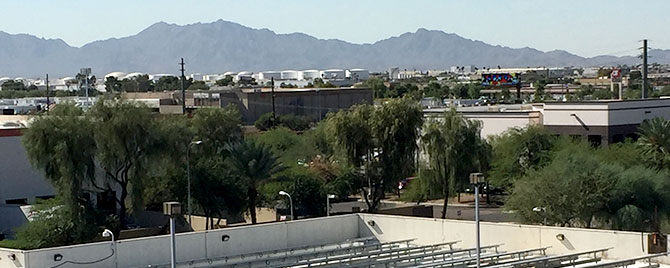Forecasts for Phoenix, Arizona, climbed to 120 degrees Fahrenheit recently, hot enough to ground smaller airplanes. The Federal Reserve Bank of San Francisco’s Phoenix Processing Center (PPC) is using some of that solar energy to keep temperatures cool in cash operations.
The sun became a permanent power source for the PPC in December 2016, the first facility in the Federal Reserve System to power operations through solar energy. The building is fitted with 988 solar panels that generate 300 kilowatts (kW) for the PPC. In comparison, it would take an 8 or 9 kW system to power a 3,000-square-foot home.
The PPC houses high-speed computer-controlled machines, each capable of verifying over 1,900 Federal Reserve notes per minute. The machines intercept potential counterfeits and destroy old, worn-out notes. Energy generated by the building’s solar panels can account for up to 40% of total energy used at the facility, powering high-consumption systems and equipment such as chillers and air conditioning.
The San Francisco Fed began its search for a renewable energy source in 2010. After exhaustive studies and research, it was clear that solar voltaic power was going to provide the best bang for the banknote in the Phoenix area, which has some of the highest concentrations of solar radiation in the nation with 3,832 annual hours of sunshine.
PPC Facilities Manager Rich Sloan says the system is already meeting expectations.
“In the first 6 months of production, the PPC generated over 190,000 kW of solar energy. We expect solar production at the PPC to increase over the next several months as a result of longer days and higher concentrations of solar radiance in the summer months. That’ll mean higher returns on the San Francisco Fed’s energy savings,” says Sloan.
The San Francisco Fed expects a complete return on its investment within 16 years, and the total life expectancy of the system is 25 years or longer. Given the power it is able to generate, the San Francisco Fed will see significant savings over the life of the system.
You may also be interested in:
The views expressed here do not necessarily reflect the views of the management of the Federal Reserve Bank of San Francisco or of the Board of Governors of the Federal Reserve System.
